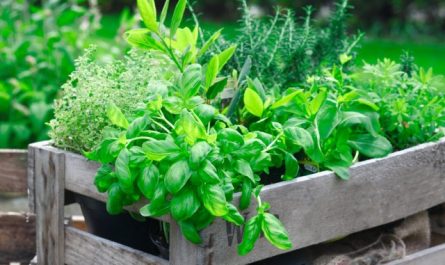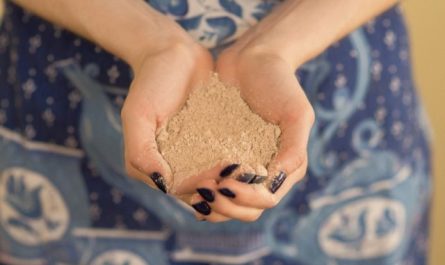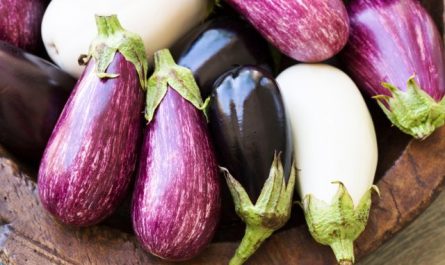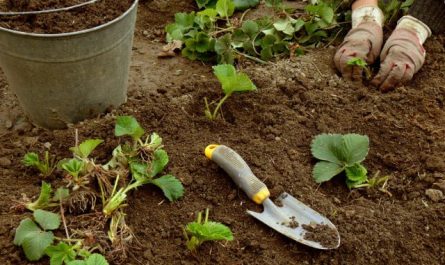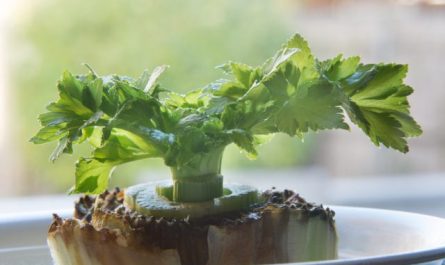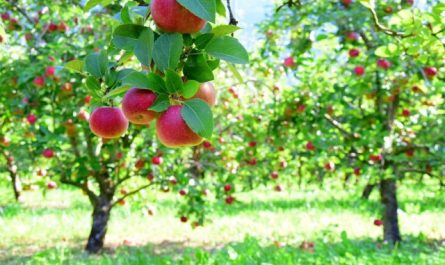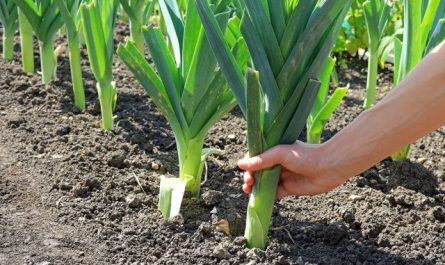One of the most important things when growing tomatoes to keep them healthy and productive is to provide support for the bushes that continually grow ripening tomatoes. In this article, we will look at how to properly tie up tomatoes so as not to harm them, but to preserve the harvest.

Why is it important to tie up tomatoes?
Staking your tomato plants is really important for their long-term health. As the plants grow and begin to produce fruit, the extra weight puts a lot of stress on the shoots.
If they are not tied up, the branches easily break and crack simply from the weight of the fruits themselves. Moreover, if a storm occurs, the plants will suffer from strong winds or heavy rain.
Additionally, staking allows for better air and light flow, which helps keep plants healthier and allows fruits to ripen faster and more evenly.
Staking also makes watering, weeding, and harvesting easier. But perhaps most importantly, it keeps the fruit and leaves off the ground to protect the crop from soil-borne pests and diseases.

How to tie up tomatoes
Choosing the wrong staking material can cause serious damage to tomatoes. Materials that are too rigid will easily cut and damage the stems as they grow, as well as in windy conditions.
In particular, plastic ties, metal wire, and other hard materials should not be used for tying. Rough rope can also cause problems.
Cotton yarn. One of the easiest and most economical ways to tie up plants is with a simple skein of yarn. Cotton yarn is both strong and flexible. It allows plants to grow freely because it expands when the stem is pushed against it.
Because yarn can be purchased in long skeins and cut to size, it is also one of the cheapest ways to tie up tomatoes, peppers, and just about any plant that needs support. You can even find yarn in a natural green color so it blends in with the plants and is not too obvious.
Jute ropeJute rope is an old favorite used by many gardeners to tie up tomatoes. It is economical and usually does not cause problems for the plants (unless you buy very thin rope). This thread is eco-friendly, due to its natural origin, and can be decomposed in the compost heap.
Spunbond plant tying tape. Spunbond is highly durable. Thanks to the light stabilizer, the tape does not deteriorate in the sun, while it dries quickly and is not subject to rotting. Sufficient width and softness protect the stems from chafing.
Old shirts and nylon tights. Of course, we can’t help but mention the old tomato tying tool – pantyhose. They work very well as a support for the stems, and their flexible properties are convenient for the plants. Some gardeners use old cotton T-shirts or shirts cut into strips. However, a lot of bright rags can make the garden a little unsightly.



How to tie up tomatoes correctly
This starts with supporting the main stem of the tomato plant as early as possible. In fact, the best time to install tomato supports is the day of planting. This will support the plants in the early stages and prevent damage to the roots and compaction of the soil (as will happen if you insert stakes when they are older).
Ensuring early stability of the main stem of a tomato plant is critical to the subsequent establishment of all other branches and future growth.
Start tying at the base of the plant, about 5 inches ( cm) from the ground. Do not tighten the loop, but leave some space for the stem to grow as it thickens over the summer. (A figure-eight loop works best.) Tying plants too tightly to stakes or structures will damage the stems. This can lead to disease and impede the flow of nutrients to the top of the plant.
If your plants are tall enough, tie a second point about 15 to 20 centimeters above ground level. This will provide the main support for the plant as it grows. When doing this, be sure to trim any branches below this point.
It’s important: Smokers can have a negative impact on tomato plants by touching the stems when tying them up. Tomatoes do not like nicotine, and the places they touch can become hotbeds for fungi and viruses. Before tying up tomatoes, be sure to wash your hands with soap!
It is always better to tie tomatoes just above the flower cluster rather than below, otherwise the stems holding the flowers may become pinched by the ties as the flowers grow into heavy clusters.
Once the plant has 4 or 5 points tied up all around the top, it’s done. As the season goes on, tie up additional stems only when they start to weaken from too much fruit.
Quite often, pruning the side shoots is a better option than tying them up. Removing them allows more energy to be directed toward producing and ripening more fruit.
Support structures for tomatoes
Before choosing a support for tomatoes, you need to know whether you have compact determinate varieties or tall indeterminate varieties. The first group of varieties only grow to a certain height, while the second group are like vines and will continue to grow and bloom until they are stopped by low temperatures. The back of the seed packet should always indicate what exactly you have planted.
Homemade Wire Cages. Such structures are suitable for supporting determinate bushes. To make a cage, use a piece of wire fencing or reinforcing mesh for concrete. Roll it into a cylinder, place it over the young tomato bush and secure it in the ground with stakes on both sides. Use mesh with lattice openings of at least 10-15 centimeters, so that you can put your hand inside, trim the bush and harvest.

Stakes. A sturdy stake is an effective support for tomato plants. For small determinate varieties, use a low stake. For indeterminate varieties, use a stake at least 2 feet long and drive it deep. (If you can’t find stakes with a pointed end, sharpen them yourself to make them easier to drive into the ground.) Avoid pressure-treated lumber, as it can leach toxic chemicals into the soil.
Stakes along the edges of the bed. An alternative method is to stretch wire horizontally across the tops of strong stakes placed at the edges of the bed. Then, run a piece of twine down from the wire to each tomato plant, securing them at the bottom by tying them to a short wooden post.
Tapestries. Tomatoes can be planted on any trellis designed for other vines, including the classic farmer’s wire trellis. However, to use a simple trellis, it is better to make it more stable by driving a row of stakes along the center of the tomato bed and stretching horizontal pieces of twine between them.
DIY Tomato SupportTo make your own tomato support, you will need strong bamboo or wooden slats (about 2,5 meters long) and strong twine. In addition to bamboo, hazelnut branches or willow rods are suitable for constructing such structures.
To do this, stick long sticks deep into the ground in parallel rows 50-70 cm apart. Tie the rods together about 15 cm from the top and attach them to a crossbar for greater stability. Use rope to tie the plants to the crossbar.
You can also build a support from wooden slats, using a few screws or nails to hold it together. Overall, building good tomato supports takes very little time and requires very few materials. So you end up saving money.
Metal tomato supports are great because they can be used over and over again. However, it is important to thoroughly clean and disinfect the supports between uses to avoid spreading disease to new plants. On the other hand, wooden structures, although not as long lasting, are generally cheaper and easier to make.



